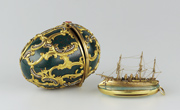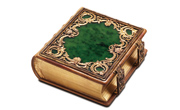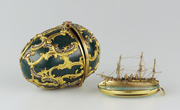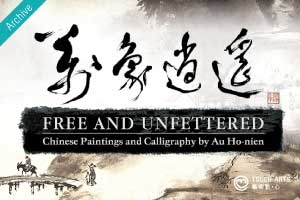Jewelry
Art Tour Guide
Art Tour Guide
Jewelry
Although the house of Faberge started as a jeweler, sadly not many pieces produced by the House of Faberge survived until today. When the Bolsheviks came to power in 1917, they were selling the jewelry abroad to gain foreign currency for the country and they were selling most of the royal family jewelry. Sometimes, the gemstones were taken out and sold.
In our museum, there used to be fewer jewelry pieces, even less than there were eggs. However, in 1990, a remarkable event occurred. In an old mansion which was going to be renovated in Moscow, tin boxes, those that were used to contain candies, were found in the house that contain many pieces of jewelry carefully wrapped and many of them had the House of Faberge label intact and even price tags on them.

As it turned out, it was one of the directors of Faberge company in Moscow, who hid these jewelry items, prior to his arrest and execution in the 1920s. Thanks to him, we can still today see these beautiful pieces.
Part of the rediscovered treasures went to our museum, and actually we present 10 pieces from that treasure box here.
These pieces show us that Faberge was an innovator in jewelry design for his time. For example, he was the first jeweler in Europe and the world that start to use platinum to create the jewelry pieces when not many jewelers will think about it. It was not considered a jewelry grade precious metal. Carl Faberge was the first one and so he was a real innovator. Unlike gold or silver, however, Faberge really appreciated the quality of platinum for its whiteness that highlights the diamond to look bigger when casted in platinum, rather than gold.
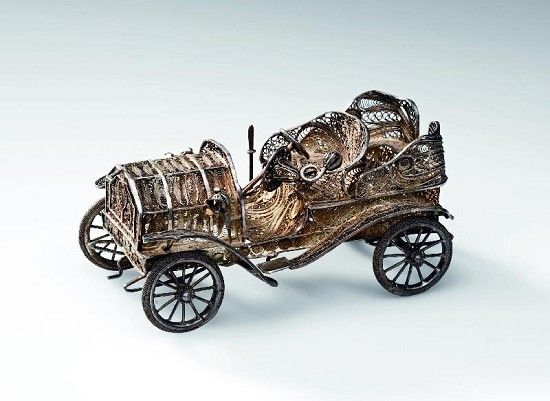 And there are some very interesting technological innovation, for example, these blue sapphires, the setting is very unique, you don’t see any metal in between them, it was called the rail type, because it looks like a rail track type of setting, and you see square cut sapphires are neatly put next to each other to resemble one line even though they are small cut stones. (the Y necklace)
And there are some very interesting technological innovation, for example, these blue sapphires, the setting is very unique, you don’t see any metal in between them, it was called the rail type, because it looks like a rail track type of setting, and you see square cut sapphires are neatly put next to each other to resemble one line even though they are small cut stones. (the Y necklace)
And these beautifully cut gemstones, that were given to the Fersman Museum by the son of Faberge Agathon when he was preparing to leave Russian in 1927 together with the fragments of the unfinished Constellation Easter egg.
So here you see Aquamarine and amatists …from the Euro mountains and European amistist is consider the best in the world and the unique world collection of color topazades.



























